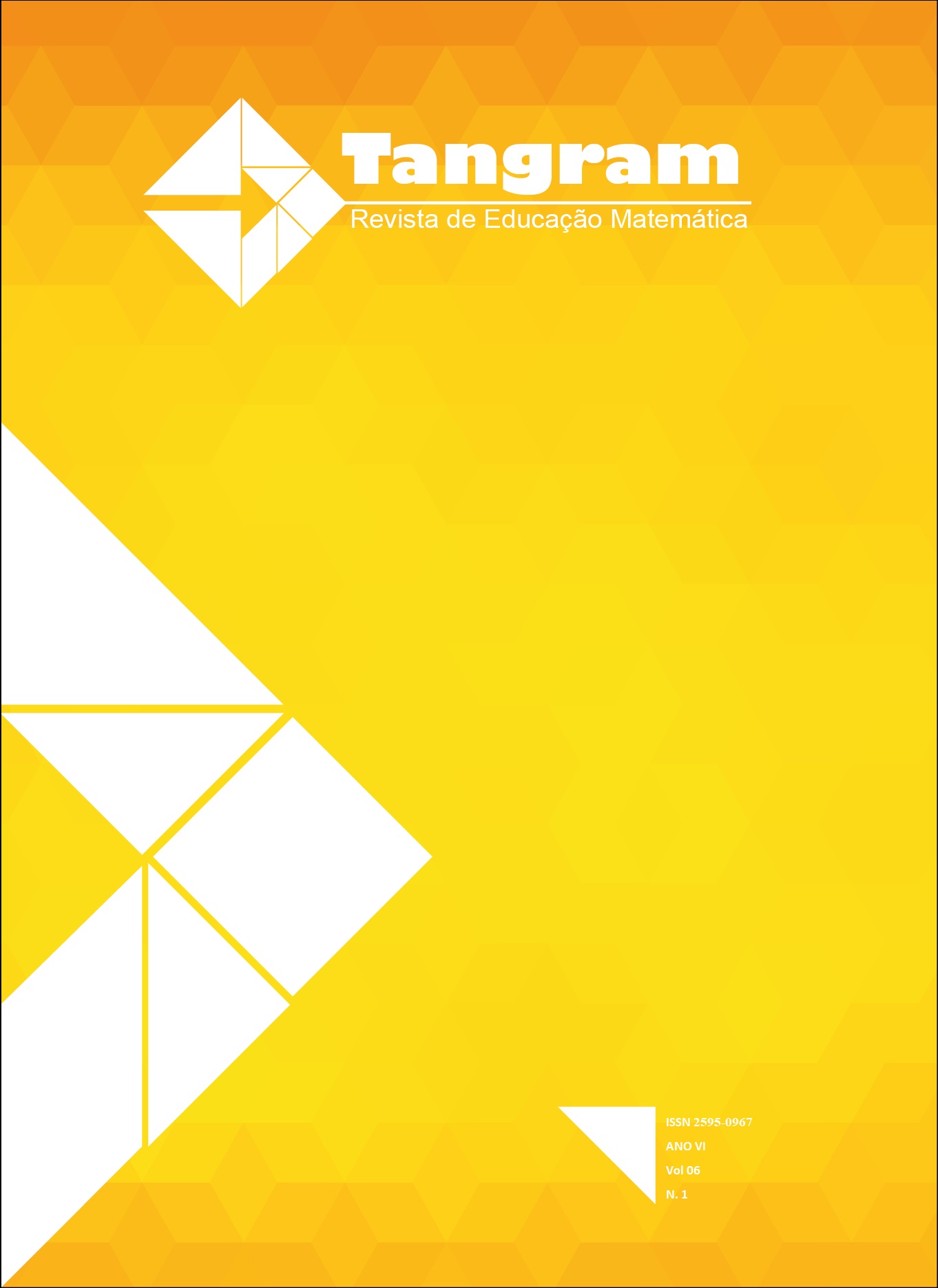The Teaching of Plane Geometry in the 2nd Grade of EducationMedium: problem situations involving land cubing
DOI:
https://doi.org/10.30612/tangram.v6i1.16671Keywords:
resolução de problemas, cubação de terras, ensino de geometriaAbstract
The objective of this work is to apply a series of activities approaching a content of Plane Geometry, more specifically, quadrilaterals. Geometry is one of the areas of mathematics and is present in the high school curriculum. Many objects around us have a geometric representation, and, in this way, students can see it applied in their social context. In this work, a differentiated class was presented, showing examples of geometry application. Calculating the area of plane figures is a way of understanding the size of a given space. Thus, land allocation is carried out from the measurements presented in flat figures and results in an area that, in rural areas, is called a task. It was discussed how land cube calculations are developed, through the resolution of mathematical problems. For this research, a qualitative approach was taken. Data analysis was performed according to the students' answers in solving the mathematical problems. Therefore, this work opens space for an analysis and discussion about everyday mathematical knowledge present in different cultures, which can be adopted as an integral part of the local curriculum, contributing to the understanding of mathematical concepts and applications in the social context.
Downloads
References
REFERÊNCIAS
Brasil,( 2018). Ministério da Educação. Base Nacional Curricular Comum. Secretaria de Educação Básica: Brasília.
Brasil. (1996). Ministério da Educação. Parâmetros Curriculares Nacionais. Secretaria de Educação Básica: Brasília.
Cirino, H. (1986). Matemática e gregos. Campinas: Átomo.
Dante, L. R. (2010).Formulação e resolução de problemas de matemática: teoria e prática. São Paulo: Ática.
Denzin, N. K., & Lincoln, Y. S. (2006). Introdução: a disciplina e a prática da pesquisa qualitativa. In: DENZIN, N. K. e LINCOLN, Y. S. (Orgs.). O planejamento da pesquisa qualitativa: teorias e abordagens. 2. ed. Porto Alegre: Artmed, p. 15-41.
Gerdes, P. (1992). Sobre o despertar do pensamento geométrico, Universidade Federal de Paraná, Curitiba.
Gil, A. C. (1999). Métodos e técnicas de pesquisa social. 5.ed. São Paulo: Atlas.
Leonardo, F. M. de. (2010). Projeto araribá, obra coletiva - matemática. São Paulo: Moderna, 9(3).
Miranda, D. (2009). Matemática Empírica. Universidade federal do ABC. Disponível em:<http://hostel.ufabc.edu.br/~daniel.miranda/upload/2009/09/ecm1.pdf>>. Acesso em: 28 de julho 2021.
Noé, M. Matemática, Geometria plana. Disponível
em<<www.brasilescola.com.br.>>. Acesso 06 abril. 2020
.
Onuchic, L. de la R. ( 1999). Ensino – Aprendizagem de Matemática através da Resolução de Problemas. In: BICUDO, Maria Aparecida Viggiani (org.) Pesquisa em educação Matemática: Concepções & Perspectivas. São Paulo: UNESP, (p. 199-218).
Tartuce, T. J. A. (2006). Métodos de pesquisa. Fortaleza: UNICE – Ensino Superior. Apostila.
Usiskin. Z. (2007). As Operações Aritméticas como Modelos Matemáticos. In: BLUM, Werner et al. Modelagem e aplicações em Educação Matemática. Springer: New York.
Downloads
Published
How to Cite
Issue
Section
License

This work is licensed under a Creative Commons Attribution-NonCommercial-ShareAlike 3.0 Unported License.
Authors must accept the publication rules when submitting the journal, as well as agree to the following terms:
(a) The Editorial Board reserves the right to make changes to the Portuguese language in the originals to maintain the cultured standard of the language, while respecting the style of the authors.
(b) Authors retain the copyright and grant the journal the right to first publication, with the work simultaneously licensed under the Attribution-NonCommercial-ShareAlike 3.0 Brazil (CC BY-NC-SA 3.0 BR) that allows: Share - copy and redistribute the material in any medium or format and Adapt - remix, transform, and create from the material. CC BY-NC-SA 3.0 BR considers the following terms:
- Attribution - You must give the appropriate credit, provide a link to the license and indicate whether changes have been made. You must do so under any reasonable circumstances, but in no way that would suggest that the licensor supports you or your use.
- NonCommercial - You may not use the material for commercial purposes.
- Sharing - If you remix, transform, or create from material, you must distribute your contributions under the same license as the original.
- No additional restrictions - You may not apply legal terms or technological measures that legally restrict others from doing anything that the license permits.
(c) After publication, authors are allowed and encouraged to publish and distribute their work online - in institutional repositories, personal page, social network or other scientific dissemination sites, as long as the publication is not for commercial purposes.






